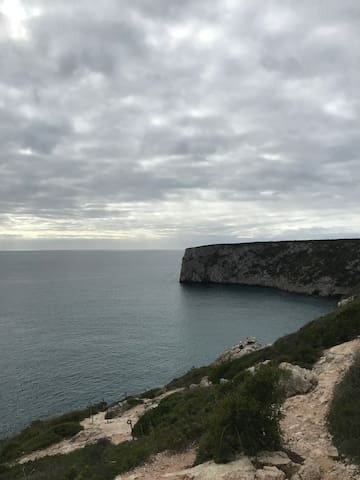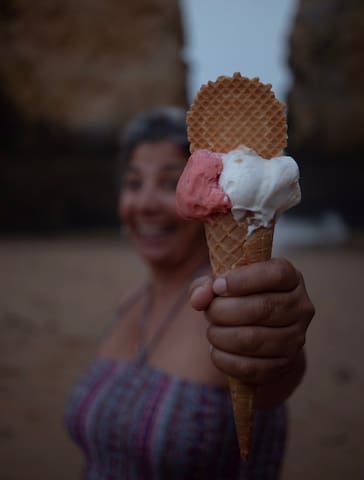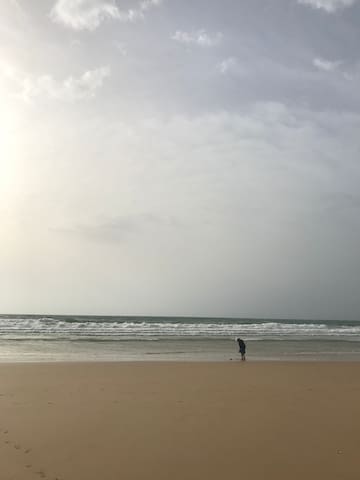Sightseeing
Sagres is the most westerly town of the Algarve and is a destination for visitors who appreciate nature’s raw beauty.
The region is formed of massive cliffs and vast beaches, which are pounded by huge waves that roll in from the Atlantic Ocean. These powerful waves have drawn experienced surfers to Sagres, and this in turn has allowed the town to gain an unobtrusive, cool vibe.
294 vietiniai rekomenduoja
Sagres
Sagres is the most westerly town of the Algarve and is a destination for visitors who appreciate nature’s raw beauty.
The region is formed of massive cliffs and vast beaches, which are pounded by huge waves that roll in from the Atlantic Ocean. These powerful waves have drawn experienced surfers to Sagres, and this in turn has allowed the town to gain an unobtrusive, cool vibe.
The small, sandy beach is sheltered by rock formations, creating natural tunnels and caves. The water is clear here, but there are strong currents and high waves, so be careful when swimming.
37 vietiniai rekomenduoja
Lagos
The small, sandy beach is sheltered by rock formations, creating natural tunnels and caves. The water is clear here, but there are strong currents and high waves, so be careful when swimming.
One of the oldest types of fishing in the Algarve continues to persist on the beach of Meia Praia by the only master of the Xávega art (traditional trawl fishing) who is still licensed in Lagos. The art continues almost the same as it was performed more than 100 years ago, with the human strength of a minimum of 16 people to pull the "calas" (cables used to draw out the nets).
157 vietiniai rekomenduoja
Meia Praia, Lagos
One of the oldest types of fishing in the Algarve continues to persist on the beach of Meia Praia by the only master of the Xávega art (traditional trawl fishing) who is still licensed in Lagos. The art continues almost the same as it was performed more than 100 years ago, with the human strength of a minimum of 16 people to pull the "calas" (cables used to draw out the nets).
Food scene
Alvor is a small fishing village located about seven kilometers west of Portimão / Praia da Rocha in the Portuguese district of Faro. With a total area of about 15.25 km2 and the place has about 5000 inhabitants. During the Moorish occupation there was a castle which, was destroyed by the earthquake in 1755. The town is situated on a lagoon which opens onto the Atlantic Ocean. In the cozy narrow streets in the center you will find nice shops, restaurants and cozy bars. About 500 meters from Alvor you will find one of the finest sandy beaches of the Algarve, Praia do Alvor.
32 vietiniai rekomenduoja
Alvor
Alvor is a small fishing village located about seven kilometers west of Portimão / Praia da Rocha in the Portuguese district of Faro. With a total area of about 15.25 km2 and the place has about 5000 inhabitants. During the Moorish occupation there was a castle which, was destroyed by the earthquake in 1755. The town is situated on a lagoon which opens onto the Atlantic Ocean. In the cozy narrow streets in the center you will find nice shops, restaurants and cozy bars. About 500 meters from Alvor you will find one of the finest sandy beaches of the Algarve, Praia do Alvor.
Neighbourhoods
There are several vestiges of historical monuments in the Borough of Carvoeiro but everyone's attention converges on that sentinel overlooking the sea, which is called Our Lady of the Incarnation. It is here that one can find the remains of the fortress that defended the fishermen's village and its surroundings from the marauding pirates for several centuries. The chapel, with the devotion of the Saint whose name it was given, can also be found there.
Chapel of Our Lady of the Incarnation
204 vietiniai rekomenduoja
Carvoeiro
There are several vestiges of historical monuments in the Borough of Carvoeiro but everyone's attention converges on that sentinel overlooking the sea, which is called Our Lady of the Incarnation. It is here that one can find the remains of the fortress that defended the fishermen's village and its surroundings from the marauding pirates for several centuries. The chapel, with the devotion of the Saint whose name it was given, can also be found there.
Chapel of Our Lady of the Incarnation





